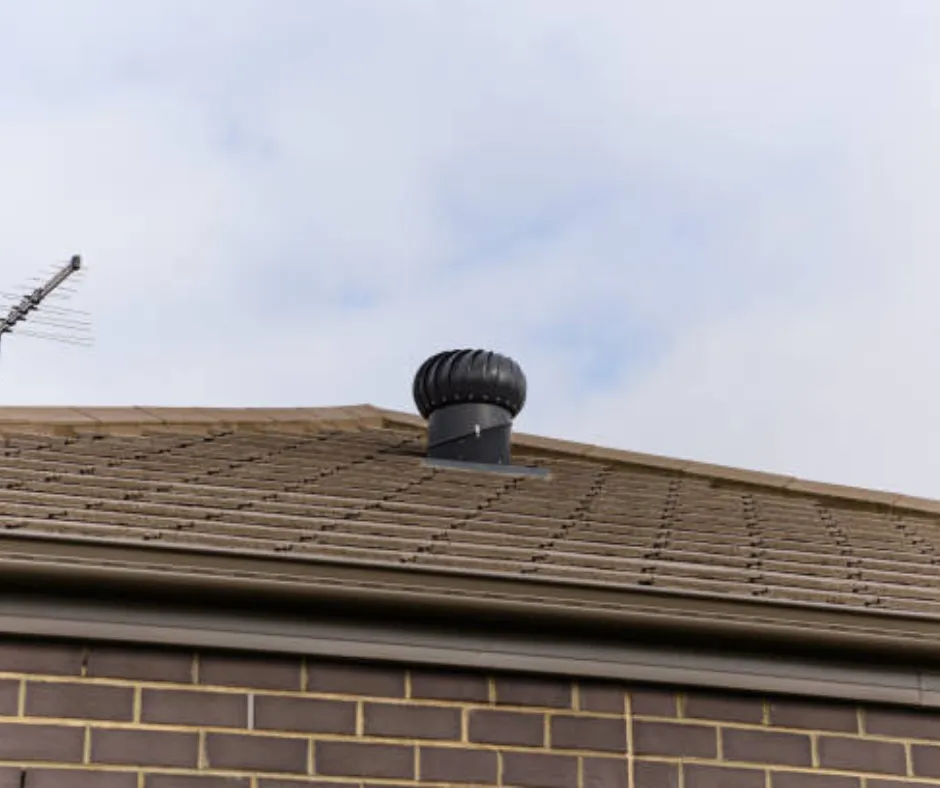
What It Does and Why It MattersRoof Air Ventilator
Roof Air Ventilator: Key to a More Energy-Efficient Home
Struggling with high energy bills or stuffy indoor air? A roof air ventilator might be the missing piece. These systems play a crucial role in balancing attic temperatures, reducing moisture, and making your home more energy efficient.
At RJM Best Roofing Inc., we install and upgrade roof ventilation systems for homeowners in a 40-mile radius around Port Chester, NY. In this blog, we’ll explain what a roof air ventilator does and why it should be part of your roofing strategy.
What Is a Roof Air Ventilator?
Definition and Purpose
A roof air ventilator is a system designed to remove hot, humid, or stale air from your attic or roof cavity. It allows continuous airflow that helps regulate indoor temperature and humidity.
Types of Roof Air Ventilators
Ridge Vents: Run along the peak of a sloped roof, allowing hot air to escape naturally.
Turbine Vents: Wind-powered devices that spin to pull air from the attic.
Powered Attic Vents (PAVs): Electrically driven fans that provide strong air extraction.
Solar Roof Ventilators: Use solar panels to power a fan that ventilates your attic—energy efficient and eco-friendly.
Where They Work Best
Roof air ventilators are ideal for both pitched and flat roof systems. At RJM, we assess the roof structure and recommend the right ventilator based on home size, attic space, and ventilation goals.
How Roof Ventilation Affects Home Energy
Reduces HVAC Load
By removing heat from the attic, a ventilator reduces how hard your AC needs to work. This lowers cooling costs, especially during New York’s hot summers.
Maintains Indoor Comfort
Balanced airflow prevents hot or cold zones in your home. Your living areas stay more consistent in temperature, which means fewer thermostat adjustments.
Prevents Moisture Damage
Ventilators help push out humid air, which protects insulation, wood framing, and roof materials from rot, mold, and water damage.
Choosing the Right Roof Air Ventilator
Climate and Roof Type
Homes in colder climates may need different ventilation systems than those in warm, humid areas. RJM considers both when making recommendations.
Power Source Considerations
If you're looking for a passive system, ridge or turbine vents are great. Want more control? Go with electric or solar-powered roof air ventilators.
Installation by Experts
Improper installation can lead to leaks, inefficiency, or even roof damage. That’s why we always design and install systems tailored to each home we work on.
FAQs – Roof Air Ventilators
Do I really need a roof air ventilator?
If your attic gets hot, humid, or shows signs of poor airflow—yes. A roof air ventilator can protect your home and reduce energy bills.
What’s the difference between passive and powered ventilators?
Passive systems (like ridge vents) rely on natural airflow. Powered ventilators (electric or solar) use fans to actively move air out.
Can I install a roof air ventilator on an older home?
Absolutely. RJM Best Roofing Inc. can retrofit ventilators to improve airflow in both old and new roofing systems.
Install a Roof Air Ventilator with RJM
When it comes to attic airflow, a roof air ventilator can make a big difference. At RJM Best Roofing Inc., we help homeowners across New York find the best ventilation solution for energy savings, comfort, and roof protection.
Contact us at (914)565-9391 or Request a roof ventilation inspection today.